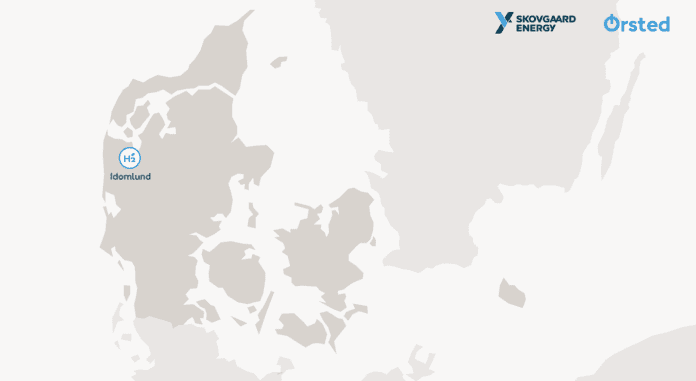Ørsted and Skovgaard Energy, a Danish renewable energy developer, have signed a letter of intent to jointly develop a Power-to-X facility in Denmark with what the companies consider to be one of the country’s most attractive locations. The facility will be built in several phases, and it can play a central role in the startup of the Danish Power-to-X industry as well as in the establishment of large-scale exports of renewable hydrogen for the green transformation of Europe. Ørsted believes that the quest to decarbonize heavy industry and transportation pose significant challenges, and green hydrogen, along with its secondary fuels, provide a way to reduce carbon emissions from some of the world’s toughest sectors to abate. Power-to-X, which Ørsted defines as “turning electricity into something else” — is the term for both hydrogen electrolysis and a series of steps that can be added to yield products such as green hydrogen, e-methanol, e-ammonia, among others.
Project Details
The first phase of the project will have an expected electrolysis capacity of 150 MW and will be powered by onshore wind and solar photovoltaic (PV). Skovgaard Energy has already commenced the development of both the Power-to-X project and the associated onshore wind and solar PV, which can enable a fast development of the project, if the regulatory work goes according to plan. The Power-to-X facility will be located in Idomlund near Holstebro in the western part of Denmark. Idomlund is expected to be the landfall for parts of the huge offshore wind build-out in the North Sea, which enables easy access to very large renewable energy resources. The European Union countries around the North Sea have set combined offshore wind targets of 65 GW by 2030 and at least 150 GW by 2050. The project’s proximity to large-scale offshore wind will allow Ørsted and Skovgaard Energy to leverage their respective generation portfolios to create additional value. Furthermore, the scalable nature of the project fits well with Ørsted’s phased approach to constructing Power-to-X projects, where learnings can be applied from project to project in the expected rapid scale-up of the technology.
If the necessary offshore wind capacity and hydrogen infrastructure in and out of Denmark are established, the facility’s electrolysis capacity will be able to increase to more than 3 GW, and the hydrogen can be exported on a large scale and contribute to the green transformation throughout Europe. This will contribute significantly to Denmark’s target of 4 to 6 GW of electrolysis capacity by 2030 and could make the facility one of the largest in Europe. The European Commission expects that tens of billions of euros will be invested in Power-to-X toward 2030, and Denmark, with its strong offshore wind resources, is well-positioned to play a leading role in the development of this industry.
“Europe needs green solutions at scale to fight climate change and to secure regional energy independence,” said Anders Nordstrøm, chief operating officer of Ørsted Power-to-X. “Few countries have as strong a potential to become a green energy exporter as Denmark due to its abundant and low-cost offshore wind resources, which are supplemented by onshore wind and solar PV. By partnering with Skovgaard Energy on the Idomlund project, Ørsted is entering one of the most strategically advantageous projects to leverage the strong fit between large-scale renewable energy and Power-to-X.”
“It’s a historically good day for the economic development of western Denmark,” said Niels Erik Madsen, CEO of Skovgaard Energy. “With this collaboration with Ørsted, we’re shifting gears and accelerating the local, national, and international green transition. We’re proud of the collaboration and of contributing to this development.”
















